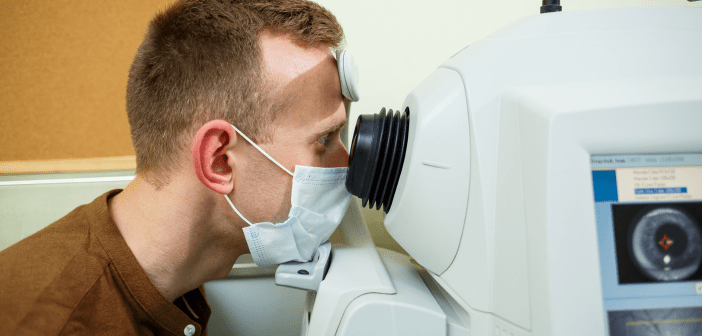Biomarkers found in retina 7 years before clinical Parkinson’s disease diagnosis

Refer a colleague
A research team, comprised of experts from Moorfields Eye Hospital and UCL Institute of Ophthalmology (both London, UK), have discovered markers that indicate the presence of Parkinson’s disease in patients 7 years (on average) before the disease is clinically diagnosed. This study, the most extensive study to date on retinal imaging in Parkinson’s disease, is the first time these findings have been detected several years before diagnosis.
The study, published in Neurology, utilized AI to identify markers of Parkinson’s in eye scans. The AI analysis of the AlzEye dataset – the world’s largest single institution retinal imaging database linked with NHS data – was repeated using the wider UK Biobank database to replicate the discoveries. Utilizing two large datasets enabled the team to identify these subtle markers despite the low prevalence of Parkinson’s disease amongst the population.
Alastair Denniston, consultant ophthalmologist at University Hospitals Birmingham, professor at the University of Birmingham (both UK) and part of NIHR Moorfields Biomedical Research Centre (London, UK) stated:
“This work demonstrates the potential for eye data, harnessed by the technology to pick up signs and changes too subtle for humans to see. We can now detect very early signs of Parkinson’s, opening up new possibilities for treatment.”
Many healthcare professionals have regarded the eyes as the ‘window’ to the rest of the body in terms of providing direct insight into various aspects of our health. Previously, the data from eye scans has been used to reveal signs of other neurodegenerative conditions such as multiple sclerosis, Alzheimer’s and schizophrenia most recently. These scans consist of high-resolution 3D images known as optical coherence tomography (OCT), which can produce a cross-section of the retina in great detail – even down to a thousandth of a millimeter.
Siegfried Wagner, a clinical research fellow at Moorfields Eye Hospital, UCL Institute of Ophthalmology researcher and principal investigator for this and several other AlzEye studies, commented:
“I continue to be amazed by what we can discover through eye scans. While we are not yet ready to predict whether an individual will develop Parkinson’s, we hope that this method could soon become a pre-screening tool for people at risk of disease. Finding signs of a number of diseases before symptoms emerge means that, in the future, people could have the time to make lifestyle changes to prevent some conditions arising, and clinicians could delay the onset and impact of life-changing neurodegenerative disorders.”
These retina images are not only effective for monitoring eye health but are also the only non-intrusive way of viewing the layers of cells below the skin’s surface. In recent years, researchers have utilized machine learning AI to accurately analyze large numbers of OCTs and other eye images in a fraction of the time taken by a human, uncovering previously hidden information about the whole body.
Louisa Wickham, Moorfields’ medical director, stated on the future of analyzing OCT scans,
“Increasing imaging across a wider population will have a huge impact on public health in the future and will eventually lead to predictive analysis. OCT scans are more scalable, non-invasive, lower cost and quicker than brain scans for this purpose.”
Sources: Wagner SK, Romero-Bascones D, Cortina-Borja M, et al. Retinal optical coherence tomography features associated with incident and prevalent Parkinson disease. Neurology. doi: 10.1212/WNL.0000000000207727 (Epub ahead of print; 2023), Moorfields Eye Hospital press release: www.moorfields.nhs.uk/news/eye-scans-detect-signs-parkinson-s-disease-seven-years-diagnosis
Please enter your username and password below, if you are not yet a member of Bioanalysis Zone remember you can register for free.





